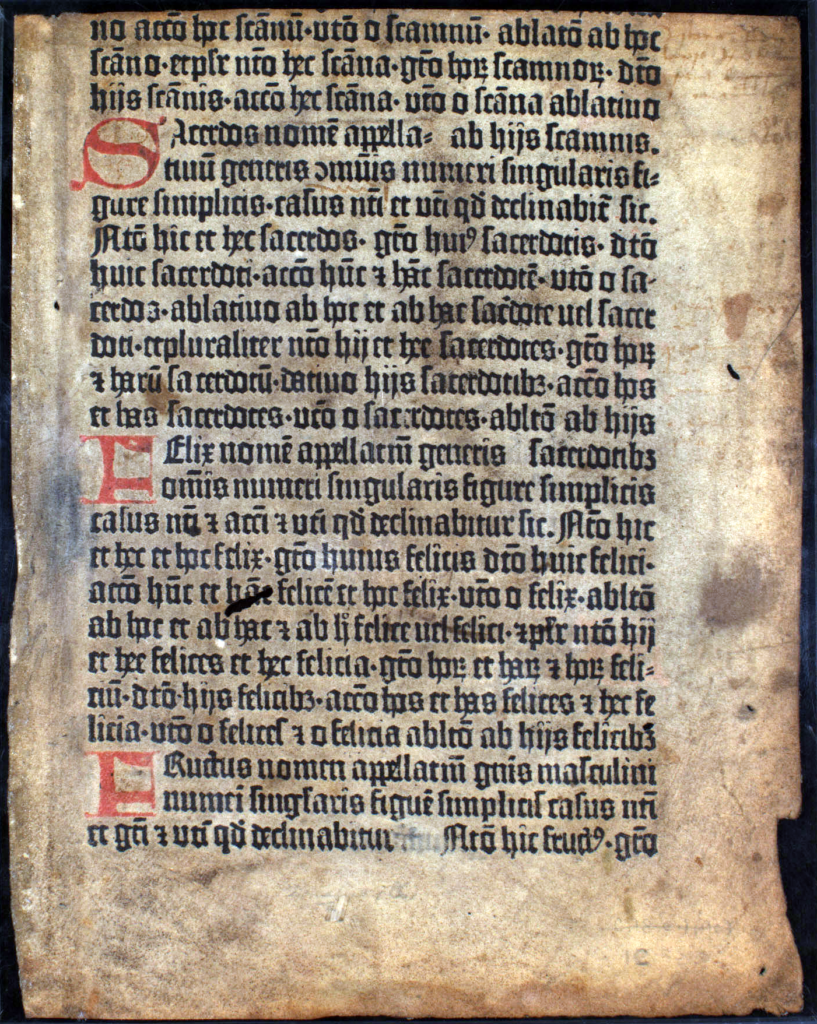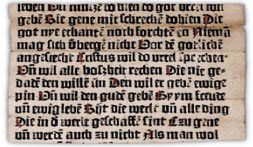- Download:
- MP3 Audio110 MB

For our 100th episode, we look at one of the technologies that marks an endpoint for the middle ages, the printing press, and consider how Johann Gutenberg may be a prototype for today’s paranoid tech tycoons and the lawsuits that so often dog them.
Today’s Texts
- Van der Linde’s, A. The Haarlem Legend of the Invention of Printing. Translated by J.H. Hessels, Blades, East, & Blades, 1871. Google Books.
- Schröder, Edward. Das Mainzer Fragment vom Weltgericht. Gutenberg-Gesellschaft, 1908. Archive.org.
- Trithemius, Johannes. “From In Praise of Scribes.” In Writing Material: Readings from Plato to the Digital Age. Edited by Evelyn B. Tribble and Anne Trubek, Longman, 2003, pp. 469-475.
References
- Green, Jonathan. “The Sibyl’s Book.” Printing and Prophecy, edited by
- “Gutenberg in Strasbourg.” The International Gutenberg Society, https://www.gutenberg-gesellschaft.de/en/johannes-gutenberg/gutenberg-in-strasbourg/
- “Helmasperger’s Notarial Instrument.” Gutenberg Digital,www.gutenbergdigital.de/gudi/eframes/texte/frameset/indexnot.htm
- Lienhard, John H. “Johann Gutenberg.” Engines of Our Ingenuity, no. 753, University of Houston, 1993, www.uh.edu/engines/epi753.htm
- Needham, Paul. “Early Print and Paleography.” The Oxford Handbook of Latin Palaeography, edited by Frank Coulson and Robert Babcock, Oxford UP, 2020.
- White, Eric Marshall. “Printed for Performance: Ceremonial and Interactive Aspects of Books from Europe’s First Presses.” RBM: A Journal of Rare Books, Manuscripts, and Cultural Heritage, 2014, pp. 15-30, rbm.acrl.org/index.php/rbm/article/download/412/412
Music Credit: Edvard Grieg, Piano Concerto in A minor, Op. 16, II. Adagio, performed by Skidmore College Orchestra and made available under the CC-PD license on MusOpen.org.
Image: Leaf from a Gutenberg Donatus (British Library) and an image of the Sibyllenbuuch Fragment (via Wikimedia Commons).




fazirh
6ig6fn